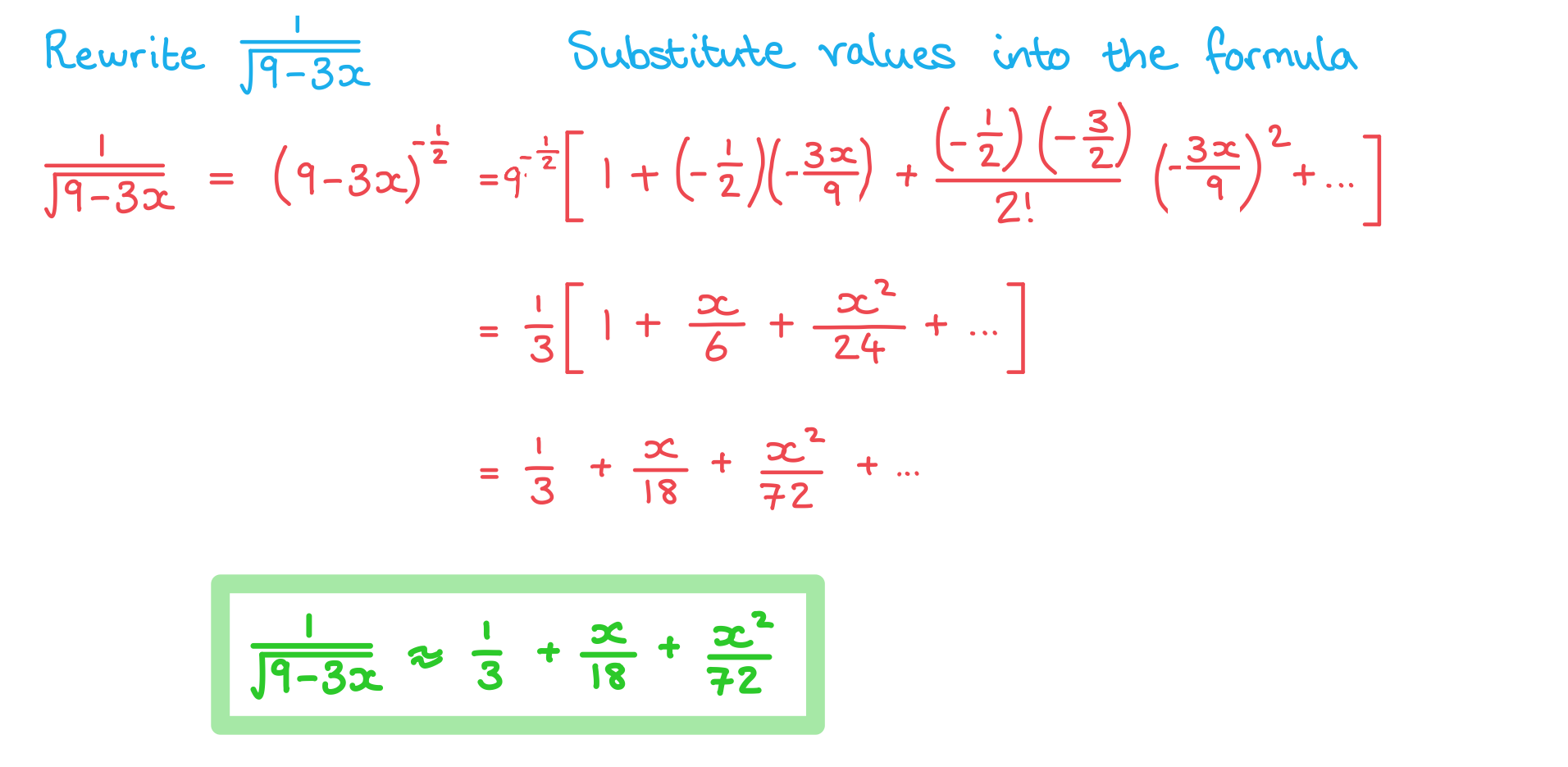Extension of The Binomial Theorem (DP IB Analysis & Approaches (AA)): Revision Note
Did this video help you?
Binomial theorem: fractional & negative indices
What is the extension of the binomial theorem?
The extension of the binomial theorem is an expansion that allows for the power
to be fractional and/or negative
It is
This formula
has an infinite number of terms
works if
The formula also holds for
being a positive integer
In this case it's an alternative form of the
formula
with a finite number of terms
thus it holds for all rational powers of
Examiner Tips and Tricks
The formula for the extension of the binomial theorem, where , is given in the formula booklet.
Examiner Tips and Tricks
You may assume the condition is always satisfied, unless told otherwise.
How do I use the extension of the binomial theorem?
To use the extension of the binomial theorem
first convert the expression into the form
this may require index laws
then substitute in
,
and
and simplify
e.g. to find the first three terms in the expansion of
Convert it into the form
Substitute
,
and
into the extension formula
simplify each term
Examiner Tips and Tricks
Don't forget that expressions in the form can be expanded by first writing them as
.
Worked Example
Find the terms up to and including in the expansion of
.


Unlock more, it's free!
Did this page help you?